While we were cruising up the Red Sea and congratulating ourselves on escaping the pirates, the captain came on the intercom to announce that the US State Department had softened their advisory for southern Egypt, and that following many conferences with headquarters, and Herculean efforts by the shore excursions department, Egypt is back on the itinerary, although in abbreviated form. We will stop at Safaga for one day only, instead of the two originally scheduled, and will not be going to Sharm-el-Sheik or Alexandria. However, three eleven-hour excursions to Luxor and Karnak and Valley of the Kings will be available, but people will have to sign up for them even if they previously had shore excursions from Safaga. I signed up for a tour to Valley of the Kings and Karnak; David elected to stay on the ship and skip the horrible bus ride.
Soon after we docked at Safaga, we noticed the pier was becoming covered with household goods: sofas, beds, refrigerators, even kitchen sinks.
There were trucks and people and stuff everywhere. We wondered what it was; it turned out a ferry had come across from Saudi Arabia with contract workers who were returning home and bringing all their household goods with them. Among that confusion, we boarded our buses and started out for Luxor in a huge convoy of about 15 or 16 buses. There were armed guards on the buses, and we had been told that we would not be able to travel independently, as travel had to be approved in advance, so any taxis (if you could get one to take you) would be stopped at the first checkpoint, manned by armed police. Well, the reality turned out to be a little bit different. Outside of Safaga, there was indeed a checkpoint, and vehicles were being checked, although the guards didn't seem to show any enthusiasm for thorough checking. The guide explained that the checkpoints were mainly "not working" and that everyone was waiting for the September elections, and hoping that they would mean the end of the emergency law that allows the police to conduct the checkpoints. We passed four or five other checkpoints and found that they were indeed “not working.” Either the guards just waved us through, or just watched us go by.
There was one guard tower with a rifle barrel pointing out, but no indication of whether there was a human at the other end or whether it was just a symbolic reminder. The natives were mostly friendly, waving and shouting greetings to us. (The rest just went about their business.)
We noticed that nearly all the buildings we saw looked like they were in the process of being constructed; I don’t think more than ten percent of them are finished. The guide explained this is because of the tax laws; when a house is finished, the taxes go up tremendously, so everyone just moves in when the building is half done and then slowly works at completing it someday.
While the first part of the trip was mostly desert (although studded with transmission towers for mobile phone service), the country quickly became green and abundant when we reached the area with irrigation from the Nile. Donkeys and donkey carts were still the prevalent mode of transportation.
The guide (who was from Luxor) said that per capita incomes were low in the south of Egypt, but the pace of life was very slow and peaceful, and most people were happy with their lot, preferring the peace to the more frenetic pace in cities.
When we got to the Nile, we noticed dozens of boats that take passengers to Aswan and back. The guide says it is a four day trip, with stops each day at various cities along the way. Soon after that we stopped for a photo opportunity with the Collossi of Memnon, two gigantic statues that were moved to save them from the flooding when the Aswan Dam was built. They looked kind of lonely out in a field by themselves, but they are HUGE – to give you an idea of the scale, the fence in the background of the picture is about fifteen feet tall.
I have another picture with a guy walking in front of it and the wall is about two and a half times as tall as he is. Each statue must be 20 meters or more tall.
Valley of the Kings did not allow photography, even outside the tombs. They open ten tombs at a time on a rotating basis (ten for two or three weeks and then a different ten for another two or three weeks, etc.). Our tickets said we were entitled to go into three tombs, but the guide said we only had time for two, and he picked what he said were the two best available. They were certainly very impressive, especially considering they were three thousand years old. The colors on the wall paintings were still bright and easy to see. Anything easily movable was gone, either to tomb robbers or to the Museum at Cairo, but the stone sarcophagus was still there. The guide claimed it was a single (70 ton) piece of stone that had been carved, and I believe him.
When we got back on the bus to go into Luxor and visit Karnak, the bus driver and the guide passed out box lunches for us to eat on the way; we had been worried about losing the time for lunch (about seven of the eleven hours on the tour was for driving from place to place), so that was a good thing. I later heard someone on one of the other tours complaining about the amount of time spent on lunch instead of seeing the sights, but I didn’t say anything to him about our experience; I figured it would just be rubbing salt in the wound.
We drove by the ruins of the Temple at Luxor, and got some “bus shots” of those ruins, then went on to Karnak.
Karnak is really impressive. The columns of the main avenue are so tall that you feel like you are immersed in some primeval forest. The avenue of ram-headed sphinxes is amazing, even if half of them are missing parts. There is a five-times-life size statue of a pharaoh with a life-size statue of his wife (so she looks really, really small in comparison). There is the obelisk of Hatshepsut, the only female pharaoh (she even wore a fake beard because the beard was a sign of office for pharaohs). Before someone brings up Cleopatra, let me quote the guide: “Cleopatra was a queen of Egypt, but she was not a pharaoh. Only someone whose ancestors have all been Egyptians of the royal family can be a pharaoh, but anyone can be a king or queen. Cleopatra was a Ptolemy, whose family was from Greece, so she could rule Egypt, but she could not be a pharaoh.”
We saw the Sacred Pool and a giant scarab statue. The guides all used the disclaimer “people believe” to explain that it is thought to be good luck to walk around the scarab three times. You would be amazed how many people would then proceed to walk around the scarab three times (and still not think they were superstitious).
My original reservations included dinner in Luxor and the sound and light show at Karnak, but we didn’t have time for that on this lightning visit. All too soon it was time to board the bus to go back to Safaga. We missed the convoy, and the guide said we would catch up to them, but we got stopped by three (not one, not two, but three!) trains taking sugar cane to a processing plant in a small town about half an hour out of Luxor, so we never caught up with them. It didn’t seem to matter; there were no bandits and the checkpoints still were not working. We got back to the ship past the captain’s deadline by ten minutes, but even so we were not the last bus back; David was counting, and he said we were number nine of the fifteen. He knew I would be late back, so he made dinner reservations in the Canaletto (the Italian restaurant on the ship) and we ate there, then went early to bed because of the expedition to Petra the next day.
Luxor after All!
Saturday, April 02, 2011
 Safaga, Red Sea and Sinai, Egypt
Safaga, Red Sea and Sinai, Egypt
Other Entries
-
34Papua New Guinea
Feb 2734 days prior Madang, Papua New Guineaphoto_camera22videocam 0comment 0
Madang, Papua New Guineaphoto_camera22videocam 0comment 0 -
35Crossing the Equator
Mar 0132 days prior Madang, Papua New Guineaphoto_camera11videocam 0comment 1
Madang, Papua New Guineaphoto_camera11videocam 0comment 1 -
36Sorry, we didn't go to Koror after all....
Mar 0231 days prior Koror, Palauphoto_camera4videocam 0comment 0
Koror, Palauphoto_camera4videocam 0comment 0 -
37The (unexpected) first day in Manila
Mar 0429 days prior Manila, Philippinesphoto_camera24videocam 0comment 0
Manila, Philippinesphoto_camera24videocam 0comment 0 -
38The second day in Manila (formerly the first)
Mar 0528 days prior Manila, Philippinesphoto_camera4videocam 0comment 0
Manila, Philippinesphoto_camera4videocam 0comment 0 -
39Hong Kong Special Administrative Region
Mar 0726 days prior Hong Kong, Chinaphoto_camera20videocam 0comment 1
Hong Kong, Chinaphoto_camera20videocam 0comment 1 -
40Last day in Hong Kong
Mar 0825 days prior Hong Kong, Chinaphoto_camera18videocam 0comment 0
Hong Kong, Chinaphoto_camera18videocam 0comment 0 -
41Cooking in Saigon (HoChiMinh City)
Mar 1122 days prior Phu My Vietnam, Vietnamphoto_camera28videocam 0comment 1
Phu My Vietnam, Vietnamphoto_camera28videocam 0comment 1 -
42Tea and Raffles Hotel
Mar 1320 days prior Singapore, Singaporephoto_camera22videocam 0comment 0
Singapore, Singaporephoto_camera22videocam 0comment 0 -
43Wild times at the Bird Park!
Mar 1419 days prior Singapore, Singaporephoto_camera35videocam 0comment 0
Singapore, Singaporephoto_camera35videocam 0comment 0 -
44Kochi, province of Kerala (Land of Coconuts)
Mar 1815 days prior Kochi, Indiaphoto_camera22videocam 0comment 0
Kochi, Indiaphoto_camera22videocam 0comment 0 -
45Magnificent Mumbai, Heartbeat of India
Mar 2013 days prior Mumbai, Indiaphoto_camera14videocam 0comment 1
Mumbai, Indiaphoto_camera14videocam 0comment 1 -
46Fun and games in Bombay (Mumbai)
Mar 2112 days prior Mumbai, Indiaphoto_camera15videocam 0comment 1
Mumbai, Indiaphoto_camera15videocam 0comment 1 -
47The Natural History of Sharjah
Mar 249 days prior Dubai, United Arab Emiratesphoto_camera21videocam 0comment 0
Dubai, United Arab Emiratesphoto_camera21videocam 0comment 0 -
48Superlative Dubai
Mar 258 days prior Dubai, United Arab Emiratesphoto_camera15videocam 0comment 0
Dubai, United Arab Emiratesphoto_camera15videocam 0comment 0 -
49Trading the Amsterdam for a Dhow
Mar 267 days prior Muscat, Omanphoto_camera14videocam 0comment 0
Muscat, Omanphoto_camera14videocam 0comment 0 -
50Checking out Job's Tomb
Mar 276 days prior Salalah, Omanphoto_camera18videocam 0comment 0
Salalah, Omanphoto_camera18videocam 0comment 0 -
51Luxor after All!
Apr 02 Safaga, Egyptphoto_camera21videocam 0comment 1
Safaga, Egyptphoto_camera21videocam 0comment 1 -
52Petra, the Rose City
Apr 031 day later Aqaba, Jordanphoto_camera20videocam 0comment 0
Aqaba, Jordanphoto_camera20videocam 0comment 0 -
53Transiting the Suez Canal
Apr 053 days later Suez, Egyptphoto_camera15videocam 0comment 0
Suez, Egyptphoto_camera15videocam 0comment 0 -
54Following ancient footsteps
Apr 064 days later Ashdod, Israelphoto_camera22videocam 0comment 0
Ashdod, Israelphoto_camera22videocam 0comment 0 -
55Experiencing Ephesus
Apr 086 days later Kusadasi, Turkeyphoto_camera19videocam 0comment 1
Kusadasi, Turkeyphoto_camera19videocam 0comment 1 -
56Seeing Kusadasi
Apr 097 days later Kusadasi, Turkeyphoto_camera14videocam 0comment 0
Kusadasi, Turkeyphoto_camera14videocam 0comment 0 -
57Apr 12, 2011
Apr 1210 days later Naples, Italyphoto_camera18videocam 0comment 0
Naples, Italyphoto_camera18videocam 0comment 0 -
58Apr 13, 2011
Apr 1311 days later Naples, Italyphoto_camera12videocam 0comment 0
Naples, Italyphoto_camera12videocam 0comment 0 -
59Apr 14, 2011
Apr 1412 days later Civitavecchia, Italyphoto_camera25videocam 0comment 0
Civitavecchia, Italyphoto_camera25videocam 0comment 0 -
60Chillin' in Cartagena
Apr 1614 days later Cartagena, Spain and Canary Islandsphoto_camera10videocam 0comment 0
Cartagena, Spain and Canary Islandsphoto_camera10videocam 0comment 0 -
61Apr 17, 2011
Apr 1715 days later Cádiz, Spain and Canary Islandsphoto_camera15videocam 0comment 0
Cádiz, Spain and Canary Islandsphoto_camera15videocam 0comment 0 -
62Apr 19, 2011
Apr 1917 days later Madeira Islands, Portugalphoto_camera13videocam 0comment 0
Madeira Islands, Portugalphoto_camera13videocam 0comment 0
Comments
2025-05-22
Comment code: Ask author if the code is blank

 Safaga, Red Sea and Sinai, Egypt
Safaga, Red Sea and Sinai, Egypt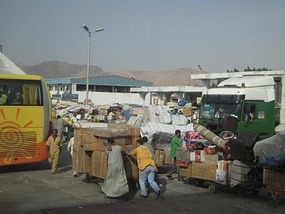

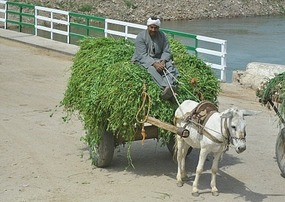
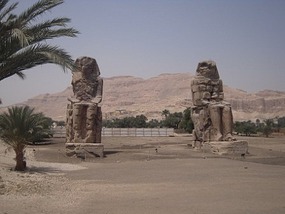
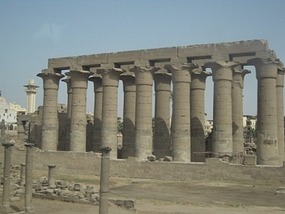
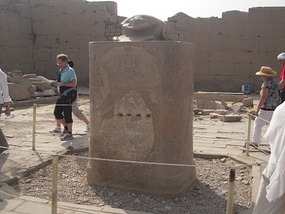
















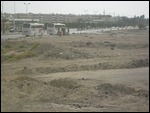
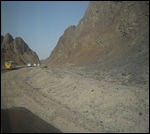
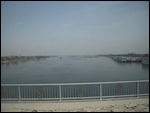
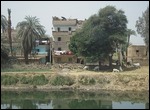
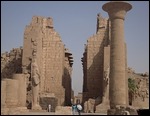
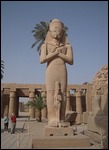
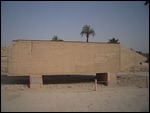

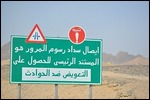
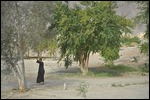
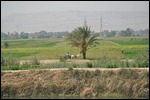

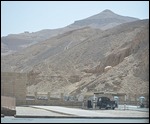
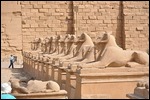
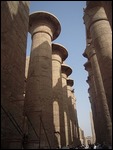
Barb
2011-04-27
Marion, I save your travel blogs for times whan I can sit and relax and dream.